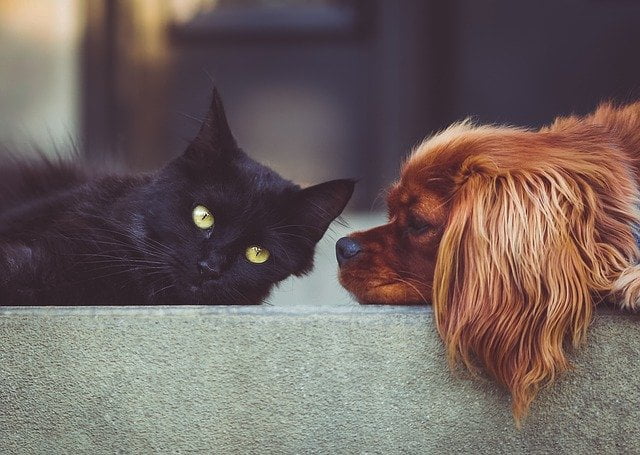How to stop your dog from chasing your cat

How to stop your dog from chasing your cat
Sometimes a dog becomes obsessed with cats and practically takes an interest in them. He may start out snarling and barking, but then can escalate into lunging and stalking. This is very stressful for your cat. If you’re wondering how to train your dog not to chase cats, the process takes time and patience – but it can be done. You can often prevent a dog from being aggressive towards cats with positive reinforcement and redirection training.
Character Match
If you haven’t adopted your cat or dog yet, try to match their personalities first. 1 Some dogs have high prey drive, and they will always try to chase and park a cat. If this is your dog, you will be much happier if you don’t try to adopt a cat. But cats can have problems, too. If your cat attacks dogs and hisses all the time, your cat may not be a “dog person,” so to speak.
A playful, lively cat works best with a playful dog, as long as he does not see the other as prey or competition. A comfortable older cat may get along better with an older dog. Don’t try to force two characters who don’t mix well.
Teaching basic commands
To reduce your dog’s prey behavior, you may need to teach your pup a few basic commands again. This includes stay, sit, come, and let go. Next, test your dog’s obedience in distracting situations and things that tempt him. Your ultimate goal is for him to obey these commands when he is around your cat. Make sure he is on a leash when you first test his obedience with the cat.
If you need to bring in a trainer or dog behavior specialist, that’s fine. Some dogs with high prey drives need specialized intervention before they can learn to leave a cat alone.
Redirect the behavior
You’ll have the best chance of curbing aggressive behavior if you pick it up early and redirect it. 2 Once dogs discover that they love chasing cats, this behavior can be hard to ignore. So try to catch it early. If he tries to rush or chase your cat, say “no” and put him in a room alone for a few minutes.
As soon as you notice your dog focusing on your cat, redirect his attention immediately. Tell him to come or leave her. When he turns around and obeys you, praise him and give him rewards. If he has been calm around your cat from the start, reward this behavior as well. Over time, give him a longer leash to work with. Make sure your cat always has a way to escape, just in case. Consider using cat trees, cat apartments, tall furniture, and cat racks as escape routes.
Some trainers suggest trying a slightly different version where you give your dog small bites of a treat every time he is around your cat. Make sure to keep your dog on a leash for your cat’s safety. 3 This will help your dog develop a positive relationship with being around your cat, and he will not be interested in chasing her.
Keep your pets entertained and busy
A dog with a lot of energy is more likely to chase a cat. 4 Take your dog for walks every day and take part in some games of fetch, training sessions, and even agility courses. The more interaction you have with his mind and body, the less likely he is to spend his extra energy on your cat.
The same goes for your cat. A cat with excess energy is more likely to pounce on a dog and possibly stimulate its prey drive. So play with your cat a lot and try clicker training or interactive games to get her interested.
Give your cat a safe place to relax, away from your dog. Keep a soothing diffuser for her comfort zone in the room to help her manage any stress she’s feeling. This drug-free solution mimics cats’ natural pheromones, helping them feel relaxed and happy.
Introduce them again
In some cases, you may have to introduce your cat and dog again. This includes keeping them in separate rooms so that they are not affected by the smell or sound of the other. Start feeding them on opposite sides of the closed door so they can eat quietly.
Next, replace the closed door with a closed gate or screen and feed it to either side of the gate. Is your dog still focused on your cat? Can you distract your dog with a command or a reward? Continue this until both pets have calmed down while eating near each other.
Then, you can give them supervised visits in the same room while your dog is on a leash. The whole process may take weeks or more. In some cases, especially with high prey dogs, you may never be able to leave them alone without supervision. This does not mean that you failed. It just means that you put their safety first.
A dog who loves to chase cats may learn to get along with one cat in particular, but other cats may “rake” his instinct. Sometimes, two pet personalities don’t quite mesh. But often, with patient training and reintroduction, your dog and cat will learn to be friends.



